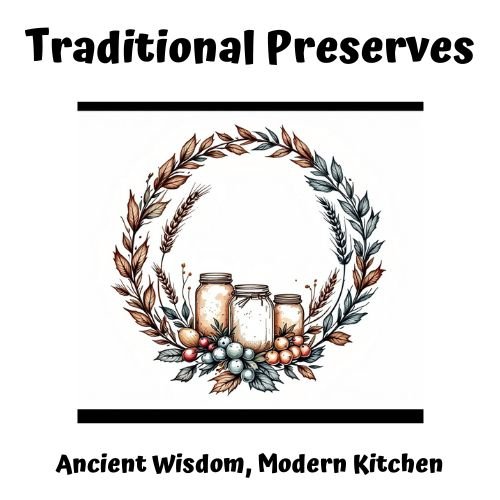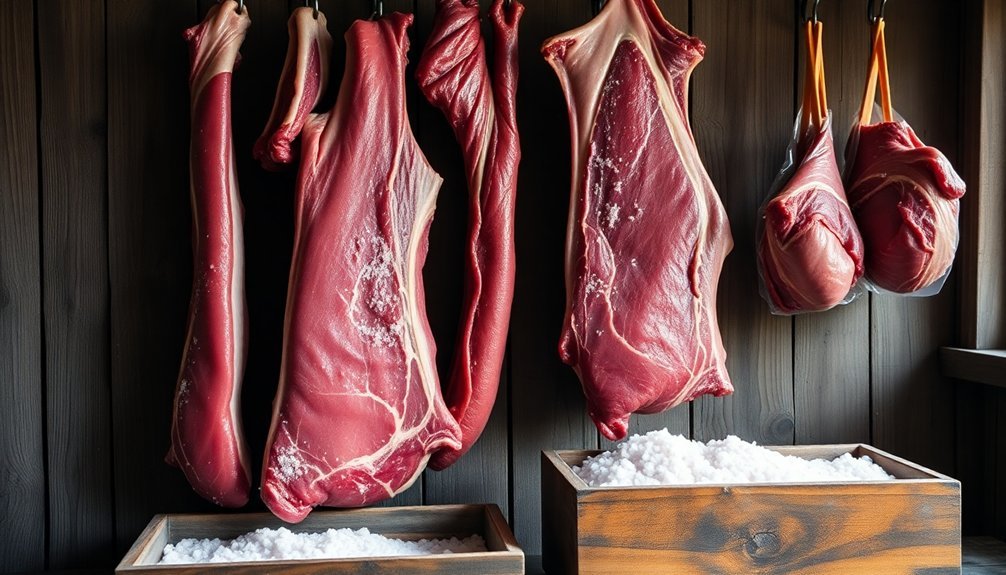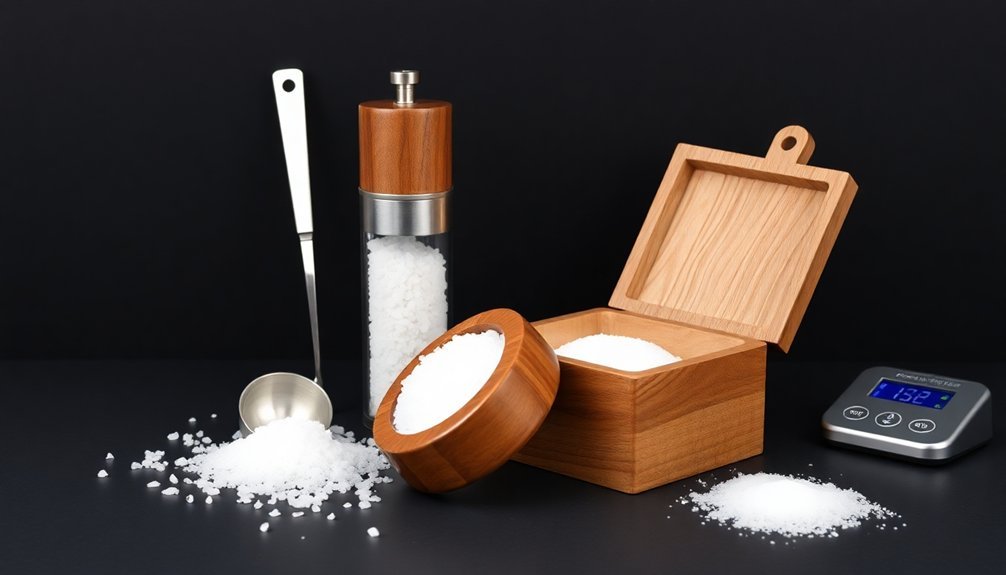Native American tribes perfected three underground food storage methods you can still use today. First, you'll find root cellars that maintain ideal temperatures between 32-40°F with 85-95% humidity – perfect for vegetables and fruits. Second, you can construct buried caches using PVC pipes for smaller, discreet food storage that keeps supplies safe and hidden. Third, you'll benefit from sealed chambers that offer year-round temperature control at 68-72°F with low humidity for dry goods. These time-tested techniques have helped communities survive harsh conditions for centuries, and their secrets can help you build a more resilient food storage system.
Root Cellar Storage Systems

A root cellar's success hinges on four critical elements: temperature, humidity, ventilation, and structural integrity.
Traditional stone and wood materials provide excellent natural insulation for root cellars.
You'll need to maintain temperatures between 32-40°F (0-4°C) and humidity levels of 85-95% to create autumn-like conditions that preserve your food effectively.
To build your root cellar, you can utilize earthbag construction, a cost-effective method using sandbags, barbed wire, and rebar.
If you're planning the structure, consider building it into a hillside or underground, and opt for curved walls rather than square ones for enhanced strength.
Don't forget to include a bond beam with 2 x 8 lumber and rebar for additional support.
You'll want to install multiple vents to guarantee proper air circulation – place intake vents near the ground and outlet vents close to the ceiling.
Cover them with mesh to keep pests out, and remember to adjust them seasonally.
Monitor your cellar's conditions using a thermometer and hygrometer, and consider installing fans for better air movement.
If you'd like more precise temperature control, add an ante-chamber.
Include minimal lighting for visibility, but make sure you've properly wired the space for safety and functionality.
Underground Cache Construction
While root cellars work well for large-scale food storage, underground caches offer a more discreet solution for smaller supplies. You'll want to carefully select your cache location by identifying spots that provide natural concealment and are easily accessible using permanent landmarks. The best time to construct your cache is between 2 and 4 AM when there's minimal activity in the area. Using silica gel packets inside your containers will help maintain optimal dryness for your stored food items.
For construction, select PVC or ABS pipes as your primary container – they're durable and resist water penetration. Cut them to size and guarantee proper sealing to protect your food supplies from moisture and pests.
| Construction Element | Specifications |
|---|---|
| Container Material | PVC or ABS pipe |
| Timing | 2-4 AM |
| Location Markers | Natural landmarks |
| Documentation | Maps & measurements |
| Cover Material | Original soil/debris |
When placing your cache, carefully layer the soil back in its original order and use the exact materials you removed for concealment. Create detailed documentation including hand-drawn maps, compass readings, and specific measurements from fixed landmarks. Store these instructions securely and share them only with trusted individuals who may need to access the cache.
Sealed Storage Chambers

Sealed storage chambers provide ideal conditions for long-term food preservation through controlled temperature and humidity levels.
You'll find these chambers maintain a steady temperature between 68°F and 72°F year-round, protecting your food from external weather extremes. They're specifically designed to keep humidity levels in check, with most facilities maintaining levels below 55% to prevent moisture damage to your stored items. These facilities offer lease cost savings of up to 50% compared to above-ground storage options.
Here's what makes sealed storage chambers particularly effective:
- They're completely protected from external elements like rain, snow, and direct sunlight, which helps prevent food spoilage.
- The solid rock structure eliminates the risk of water leaks and pest intrusion.
- You'll benefit from consistent temperature control without additional heating or cooling costs.
- The chambers can be customized with different sections to prevent cross-contamination between food types.
You can maximize your storage efficiency by using these chambers for various food types, from root vegetables to canned goods.
The controlled environment considerably extends shelf life while protecting your food's quality.
While ceiling heights might be lower than above-ground facilities, you'll find the benefits of temperature stability and natural preservation far outweigh this limitation.
Frequently Asked Questions
How Did Native Americans Identify Spoiled Food in Underground Storage?
You'd identify spoiled food through regular checks for mold, odd smells, and texture changes. By using your senses and tribal knowledge, you can spot decay and insect infestations during cache inspections.
What Natural Indicators Helped Choose Ideal Underground Storage Locations?
You'll want to look for natural slopes, established animal burrows, and healthy vegetation indicating good drainage. Check for dry soil after rain, presence of deep-rooted plants, and areas protected from direct sunlight.
How Were Underground Storage Areas Protected From Flooding During Rainy Seasons?
You'll want to build storage pits on hillsides or slopes for natural drainage. It's crucial to line the walls with gravel and create drainage channels to direct water away from your storage area.
What Methods Were Used to Deter Rodents From Accessing Stored Food?
You'll find success deterring rodents by sealing entry points with steel wool and caulk, using tight-fitting container lids, maintaining clean storage areas, and lining storage pits with natural repellents like bark.
How Did Tribes Mark Hidden Underground Storage Locations Without Attracting Unwanted Attention?
You'll find tribes used subtle natural markers like distinctive trees or rocks, plus oral traditions to remember locations. They'd share knowledge through stories and avoid obvious signs that could attract unwanted attention.
In Summary
You'll find these time-tested native storage methods invaluable for preserving your food supplies long-term. Whether you choose to build a root cellar, construct an underground cache, or create sealed storage chambers, you've now got proven techniques at your disposal. Start with the method that best suits your climate and terrain, and you'll soon have a reliable underground storage system that keeps your provisions fresh year-round.





Leave a Reply